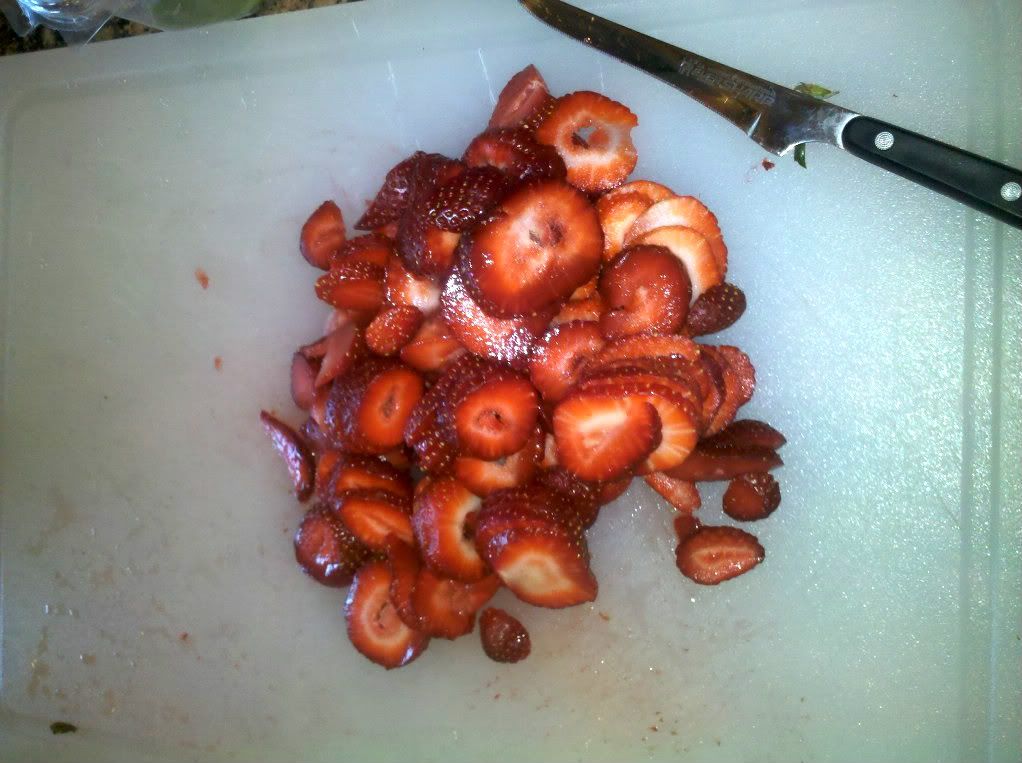A year ago before I learned to sew I could never imagine making window treatments - with or without sewing. This DIY involves minimal sewing and has a special "trick". Here we go:
1. Measure the inner portion of the window (width + length).
2. You need fabric the width of window x 2 + 4" (e.g. window width= 36"; 36 x 2= 72" + 4" = 76" wide). You're not going to be able to find fabric 76" wide, so plan on purchasing more length to compensate for a vertical seam). The length of your fabric will be length of window x 4 + 4" (if the width of your window is more than width of fabric, you will need length x 6 +6") (e.g. window length is 60"; 60 x 4=240" + 6" = 246" (about 7 yards for length).
My laundry room window is somewhat narrow, so for purposes of this tutorial, I'm assuming that the width of the window was less than the width of fabric, so I don't need to buy the extra length or sew a seam down the middle of the curtain to create the appropriate width.
3. Cut your fabric in 2 identical pieces: width + 2" and length x 2 + 2".
4. Sew around the fabric close to the edges of the fabric OR use a serger on the edges of the fabric. This will keep your fabric from fraying, which was very important for me because I was using a canvas fabric. I used a regular stitch because I was too lazy to take out the serger.
5. Place the two pieces on top of each other, right sides facing. Sew a 5/8" seam down the length on each side, LEAVING THE LAST 2" OF FABRIC FROM THE END UNFINISHED. This should leave you with the two length wide sides of the pieces sewed together except for the last 2" which are still raw openings. (Make sure the resulting width will be equal to the width of the window - if not, make the seam allowances a little bigger.)
6. Sew a 1" seam across the other end on the width of the fabric. This will be the bottom of your curtain. You should have something that looks a little like an inside-out pillow case. The last two inches on the sides of the "pillow case" should still be open and unfinished. (Don't look too closely at this picture because I didn't do it that way and had to rip seams later.)
7. Iron the seams open. Now sew small (1/2" or less) hems in each of the 2" unfinished edges mentioned in steps 5 and 6 (4 seams in all).
8. Turn the curtain right side out. With the right side up, turn the raw edge under 5/8" and sew a hem all the way around so the curtain is still open like a pillowcase. In the alternative, you can turn the raw edges under and use a single seam to hem the edges AND close the width of the curtain. I just wanted to make sure the raw edges got under, so I ended up sewing the seam once to turn the edge under and then again over the first seam to close the open end.
8. Now sew another seam across the curtain 1" below the first seam. This will create the pocket for a spring rod (the curtain rod). Insert the spring rod through the pocket.
9. Fold up the bottom of the curtain and mark where you want to put the buttons. You can use as many or as few buttons as you want because they will only be decorations.
10. Using your buttonhole attachment, put buttonholes in the locations you marked for buttons. If you are not comfortable with your buttonhole attachment, this is a great opportunity because you don't have to worry about mistakes or misplacement - it's all decorative.
11. Sew the buttons on top of the buttonholes, but don't go through both thicknesses of fabric. Again the buttons are only for decoration, so there is no need to attach them to the back portion of the curtain.
12. Cut small lengths of Velcro. Make sure to get the Velcro for fabric (sew on
without adhesive). I made the mistake of using the adhesive version and it won't hold with fabrics and if you try to sew it on, the needle can stick in the adhesive. (Please note that if you buy the correct Velcro, there is no adhesive or paper backing on either side like you see below.) Sew the Velcro on the backside of the button locations.
13. Sew the soft side of the Velcro onto the back portion of the curtain where you want the "buttons" to "fasten".
And there you have it . . . an inexpensive curtain you can make yourself. It has been several years since I originally wrote this tutorial, and that curtain is holding up well. I would not suggest this pattern for large or wide windows unless you are using a lightweight fabric.
I'd love your feedback or pictures of your button shades.
cindy




































